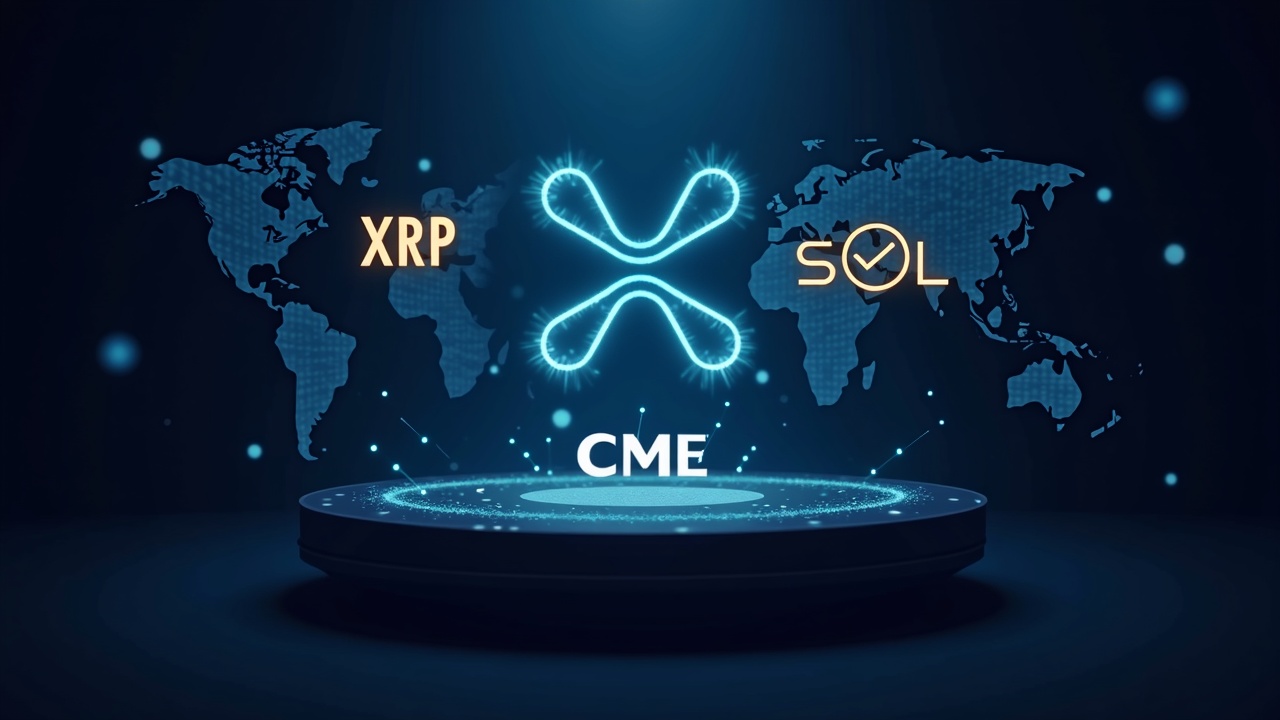The institutional adoption of cryptocurrencies has reached a significant new stage, moving firmly beyond Bitcoin and Ethereum. The rapid growth of regulated derivatives for Solana (SOL) and Ripple (XRP) on the CME Group marks a pivotal shift, demonstrating robust institutional confidence and a demand for sophisticated risk management tools across a broader digital asset landscape.
Unprecedented Growth in Altcoin Derivatives
The surge in open interest for SOL and XRP futures is a clear indicator of this rising institutional appetite. Since their launches earlier in 2025, both products have seen record-breaking adoption, swiftly accumulating billions of dollars in notional value and attracting a wide range of market participants.
Solana futures, for instance, saw their open interest surpass $2.1 billion by September 2025, achieving a record as the fastest contract to double its open interest past the $1 billion mark. This remarkable growth was mirrored in XRP futures, which reached $1.4 billion in open interest around the same time. The momentum for both assets has continued strong into October, with SOL futures hitting a new high of 20,700 contracts and XRP reaching 10,100 contracts, underscoring sustained and growing demand. This collective milestone, bringing their combined open interest close to the $3 billion mark, signals a maturing market that is expanding its focus beyond the two largest cryptocurrencies.
A New Suite of Tools for Institutional Strategy
Building directly on the deep liquidity established by these futures markets, CME Group launched options on Solana and XRP futures on October 13, 2025. This strategic expansion provides institutional funds, corporate treasuries, and arbitrage desks with a more precise and flexible toolkit for managing exposure.
These new options are available in both standard and micro-sized contracts, catering to a wide range of investors, from large institutions to active, individual traders. As Giovanni Vicioso, Global Head of Cryptocurrency Products at CME Group, stated, these contracts offer “additional choice and greater flexibility to manage… exposure to two market-leading cryptocurrencies”. The ability to hedge risk or express a directional view with limited capital exposure through regulated instruments is a critical step in the maturation of the crypto asset class. Early support from major trading firms like Wintermute, Cumberland DRW, and Galaxy highlights the market’s readiness for these sophisticated instruments.
The Institutional Appeal of SOL and XRP
The strong institutional pull towards Solana and XRP isn’t accidental; it’s rooted in their underlying technology and use cases. While Bitcoin is often viewed as a form of “digital gold”, assets like SOL and XRP offer tangible utility. Solana is known for its high-speed blockchain capable of handling a sustained pace of up to 3,000 transactions per second, making it a powerful platform for decentralized finance (DeFi) applications and smart contracts. XRP, on the other hand, is designed for efficient cross-border payments, settling transactions in seconds rather than the minutes or hours required by some other networks.
This transaction speed translates directly into lower “finality time”—the time it takes for a transaction to be considered irreversible. For financial markets, this efficiency is crucial. Furthermore, the growing institutional participation is evidenced by a record number of large open interest holders (LOIH) actively trading these products, confirming that their usage is expanding well beyond a niche group of traders.

The Road Ahead for Crypto Derivatives
The successful launch of SOL and XRP options, combined with the record-breaking open interest in their futures, points towards a future of continued diversification and sophistication in the crypto derivatives market. This trend is set to be further accelerated by CME Group’s plans to introduce 24/7 trading for its cryptocurrency futures and options beginning in early 2026. This move will align the regulated derivatives market with the always-on nature of the underlying crypto spot markets, providing institutional players with continuous risk management capabilities.
The rapid adoption of these altcoin derivatives validates a clear market desire for regulated exposure to a wider array of digital assets. For traders and treasury managers, the key indicators to watch now will be the adoption rates of the new options contracts and the evolution of open interest in the coming months, which will signal whether this institutional demand is consolidating for the long term.


